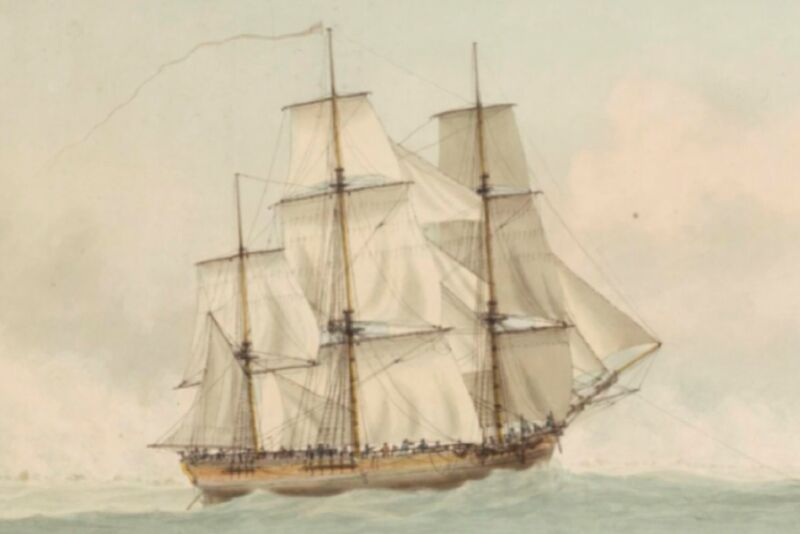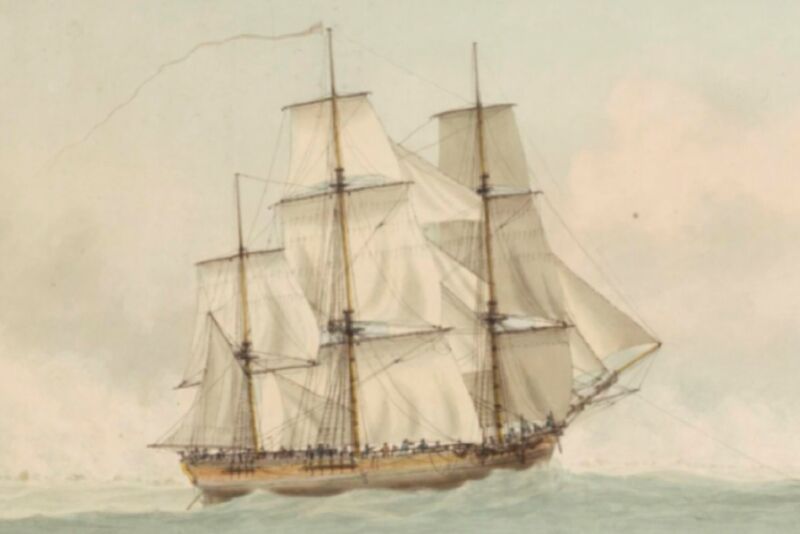
Enlarge / Painting by Samuel Atkins of the HMS Endeavour off the coast of New Holland during Cook’s voyage of discovery (1768-1771). (credit: Public domain)
The HMS Endeavour is famous for being sailed by Capt. James Cook to the South Pacific for a scientific expedition in the late 18th century. But the Endeavour (by then renamed the Lord Sandwich) met its demise in the Atlantic, when it was one of 13 ships the British deliberately sank (or “scuttled”) in a Rhode Island harbor during the American Revolution.
Now, the Australian National Maritime Museum has announced that its researchers have confirmed that a shipwreck proposed as a likely candidate in 2018 is indeed the remains of the HMS Endeavour. However, the Rhode Island Marine Archaeology Project (RIMAP)—the museum’s research partner in the project—promptly released a statement calling the announcement premature. RIMAP insists that more evidence is needed and that its own final report is still forthcoming.
The HMS Endeavour holds special relevance for the scientific community because Cook’s first voyage (1768-1771) was, in part, a mission to observe and record the 1769 transit of Venus across the Sun. The observation was part of a combined global effort to determine the distance of the Earth from the Sun. Those observations proved less conclusive than had been hoped, but during the rest of the voyage, Cook was able to map the coastland of New Zealand before sailing west to the southeastern coast of Australia—the first record of Europeans on the continent’s Eastern coastline.





